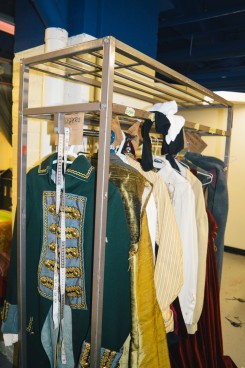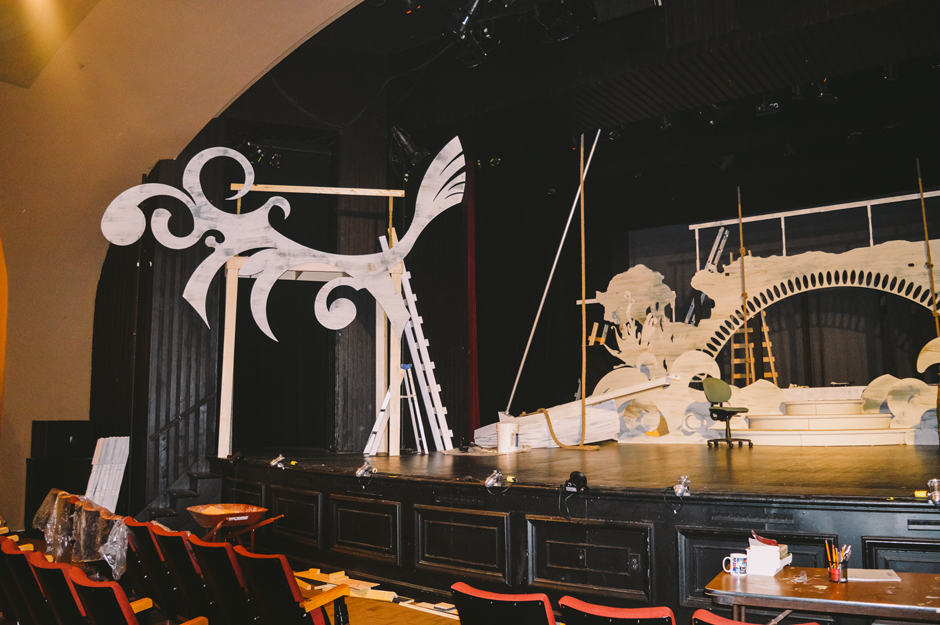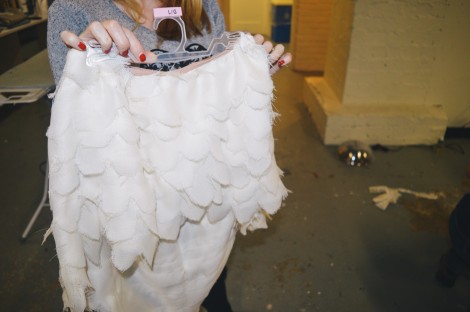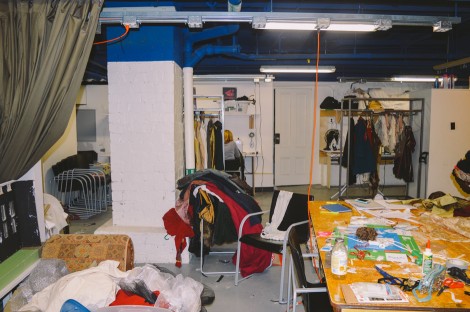This Wednesday, November 5, Hart House Theatre will open its curtains for its latest production, The Tempest, which was last performed at U of T in 1957 featuring a young Donald Sutherland. Ahead of opening night, marketing and publicity coordinator, Andrea Wasserman took me backstage to give me an idea of what the show will look like when it’s performed.
The set for the show, designed by Joe Pagan, is a series of oceanic shapes, all painted white with accents of blue and brown. Wasserman made sure I noted the “weight-supporting” hanging ropes. Though she couldn’t speak about what happens in the show, she said she had seen director Jeremy Hutton swinging from them. She also mentioned that several characters will be painted to blend in with the set, from which they will emerge at various points in the show.
“The idea is that it’s going to be multi-level,” Wasserman explained, motioning to several ladders built into the set. “All of those ladders are going to lead up to performance spaces.”
One of the first things to note about the production is that it features a whopping 29 student volunteers, a few of whom I encountered as we made our way past the stage and into the corridors that make up the theatres back stage. Noa Katz acts as set design assistant for the production, and was busy adding a painted look to a number of costumes when we walked into what is normally the theatre’s dressing rooms, but was temporarily being used as a work space.
The costumes for the show are, as Wasserman described, “made, bought, or borrowed.” Hart House Theatre often travels to Stratford or Shaw to get the necessary costumes for its performances. The look for this production of The Tempest will be of the Napoleonic period, and, glancing around the space, I could see a variety of richly coloured navy blue and dark red jackets.
Costume designer Kathleen Black walked me through some of the looks for the different characters. For Caliban, the island native and wayward servant of Prospero, a costume has been created that is half in pristine condition, half ripped and destroyed, to capture the essence of his rebellion against his servitude. For Prospero, the main character of the play and patriarch of the island, a beautiful cape has been created.
 By far the most interesting costumes that I had the chance to see belonged to the island spirit Ariel — a white feather bustier and a cape of brown feathers made by a co-op student who works with the theatre.
By far the most interesting costumes that I had the chance to see belonged to the island spirit Ariel — a white feather bustier and a cape of brown feathers made by a co-op student who works with the theatre.
Aside from how visually impactful both the set and the costumes appear to be, I was struck by the amount of student work that has gone into the production. In my time in the theatre — only about half-an-hour during a lunch break — I encountered two student volunteers. But during the busier hours of the production, there are countless student jobs that have been filled, from Victoria McEwan as assistant director, to four student assistant stage managers. If anything can be definitively said about the theatre’s latest production ahead of opening night, it’s that it’s quite beautiful, and that it’s come to be so through the help of many of U of T’s own students.




